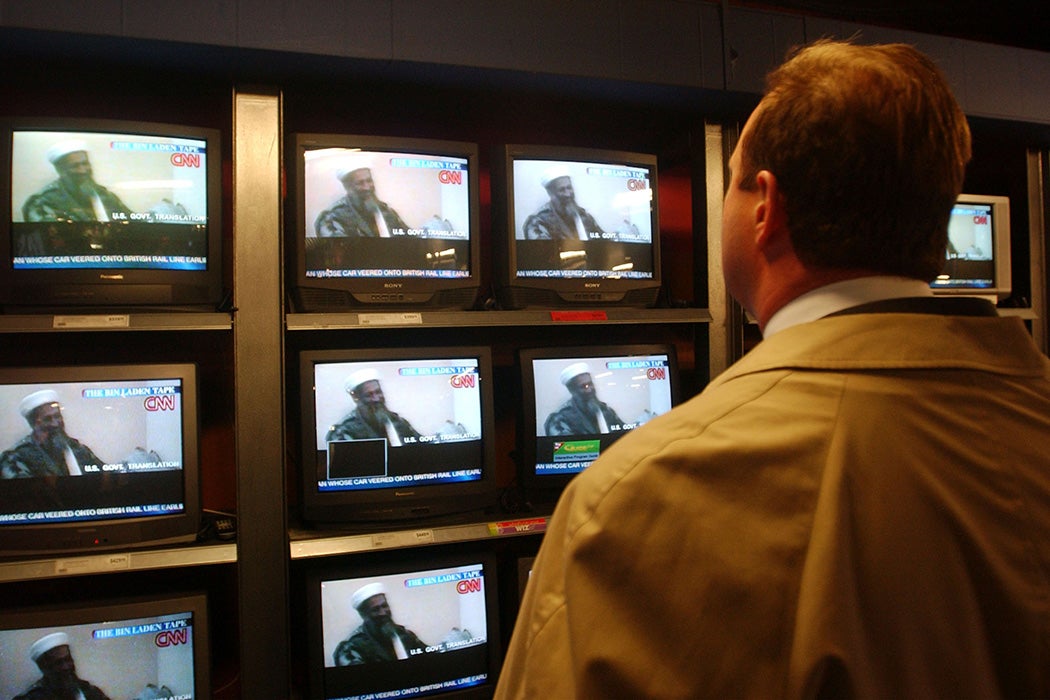Among the debates that continue to swirl around the events of January 6 is a question of definitions: Does the storming of the U.S. Capitol count as an act of terrorism?
Although the events of January 6 are recent, the debate is an old one. “Whenever a major violent action takes place in the United States, a public debate erupts as to whether it should be classified as terrorism or not,” note Connor Huff and Joshua D. Kertzer. The scholars were writing in 2018, a few years removed from the mass shooting in Charleston, South Carolina; the mass shooting in the Orlando Pulse nightclub; and the Boston Marathon bombings, among other highly publicized acts of violence.
As Huff and Kertzer’s work suggests, the media narratives Americans consume may shape their opinions about whether the events of January 6 constitute terrorism, to a startling degree.
In an experiment with 1,400 adults, the researchers manipulated key facts about hypothetical acts of violence, such as the tactic (a protest, a shooting, or a bombing, for example), the target (such as a Christian community center or a mosque), and the location (with options such as “in the United States” or “in a foreign dictatorship”). Huff and Kertzer found that many subjective qualities, such as the perceived political agenda of the attackers, have a significant impact on the likelihood that an event will be classified as terrorism.
Acts carried out by collectives, particularly groups from foreign countries, were around 15 percent more likely to be labeled as terrorism. On the other hand, individual perpetrators with histories of mental illness are significantly less likely to be considered terrorists.
The public also exposed its biases: Participants were significantly more likely to describe a Muslim actor as a terrorist and less likely to attribute the same term to an actor described as Christian. Additionally, attacks in which the political motivations for the violence are unclear are more likely to be understood as terrorism: “when in doubt, our respondents are more likely to assume an incident is political rather than personal,” the authors write.
Huff and Kertzer then took their collected data and modeled how real-world events might have been perceived differently by the public, assuming different narrative constructions about the same set of facts. For instance, their models showed that narrative constructions about the San Bernardino attackers could sway Americans’ likelihood of labeling the events “terrorism” by wide margins. If the perpetrators were labeled as having ties to foreign powers and a goal of changing policy, participants were 82 percent likely to label the attackers as terrorists. On the other hand, if a media outlet did not mention the attackers’ religion (Islam) but did raise the specter of mental illness (one of the perpetrators, Syed Rizwan Farook, had an abusive father), the probability that the public might define the attacks as terrorism dropped to 31 percent.
Weekly Newsletter
All told, the authors showed empirically how the definition of terrorism can be socially constructed. In choosing how to frame and relate acts of violence to the public, the media wields “considerable power” in this process, Huff and Kertzer write.
Crucially, they add, reporters’ decisions about narrative construction will have real and immediate consequences. Defining a violent act as terrorism to the public will influence how perpetrators are prosecuted, how the country responds, how Americans cast their votes in upcoming elections, and more.







